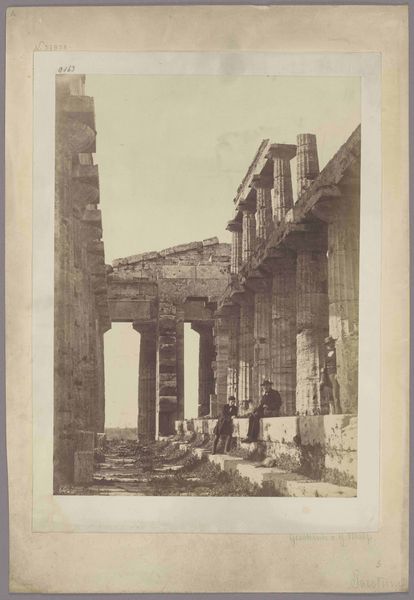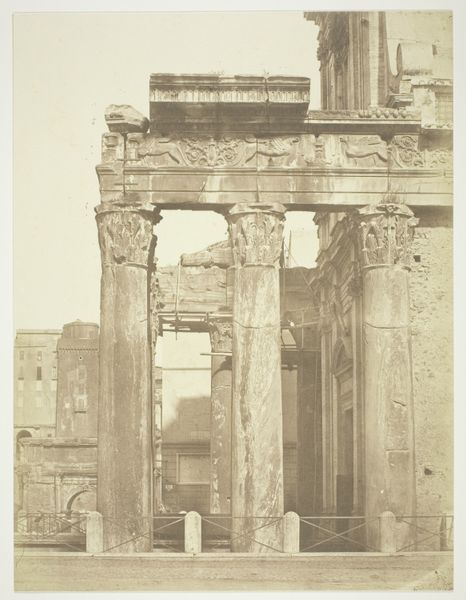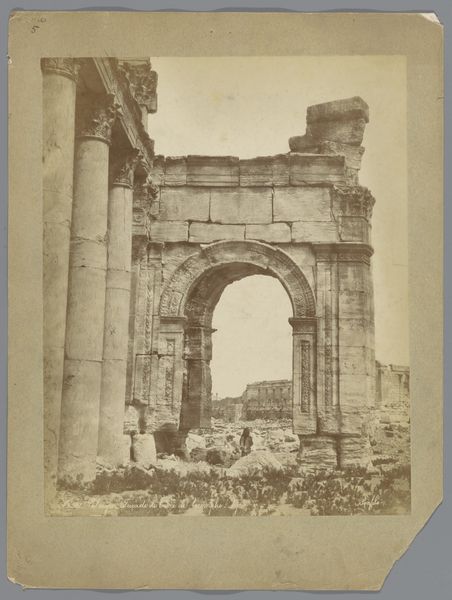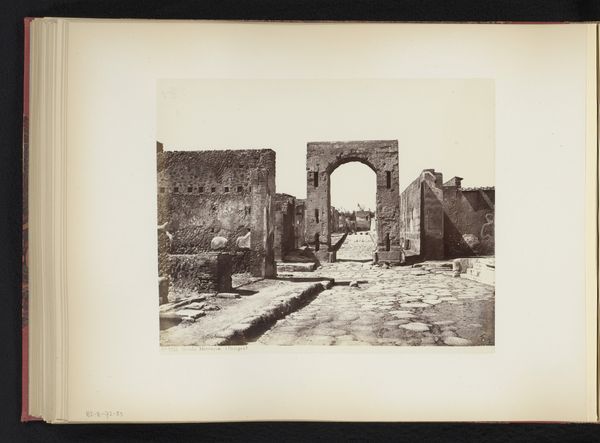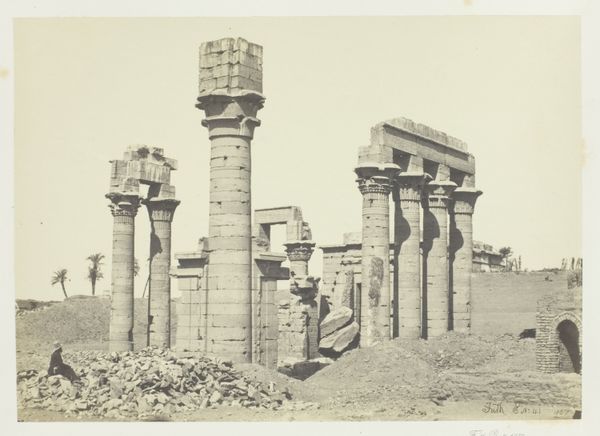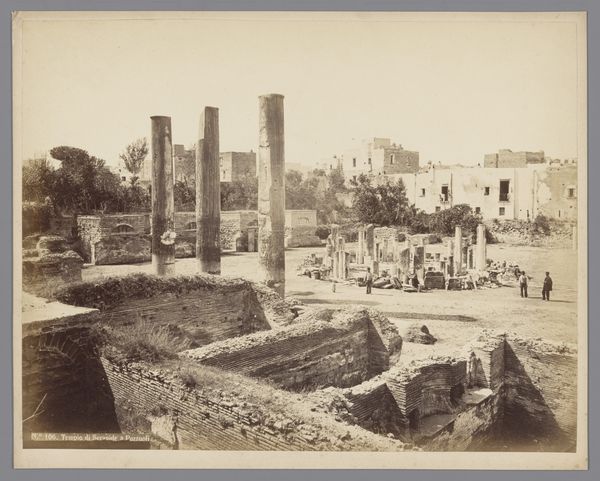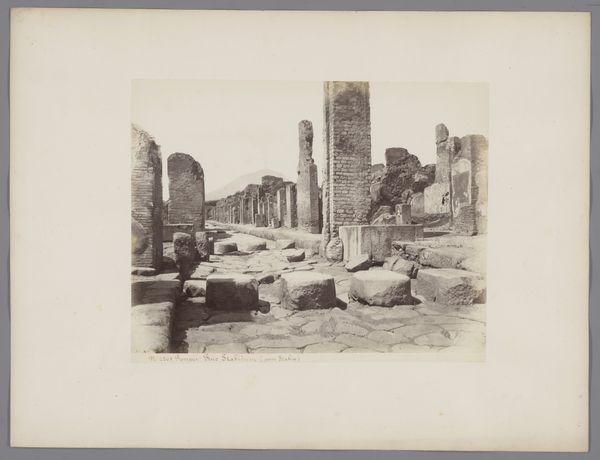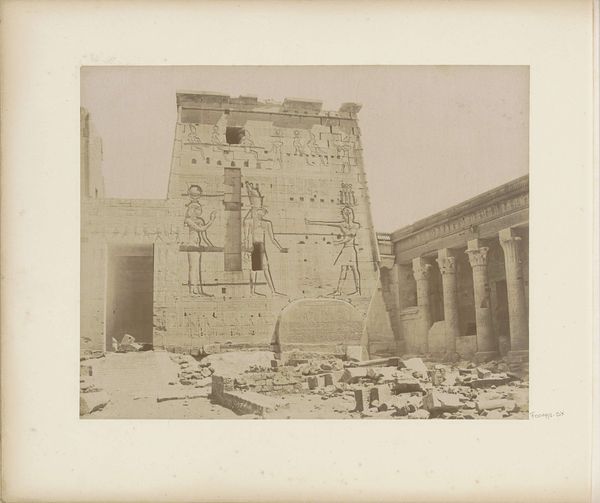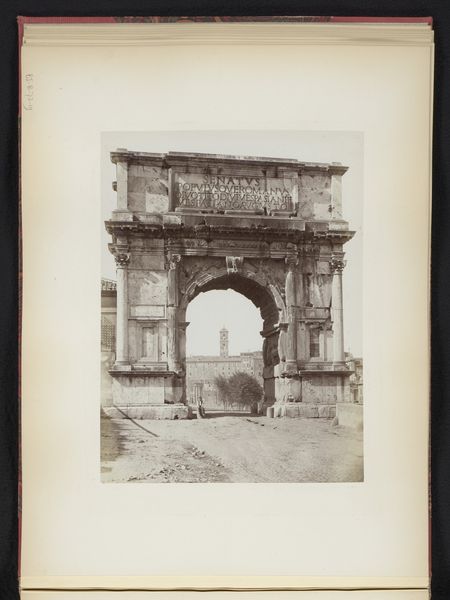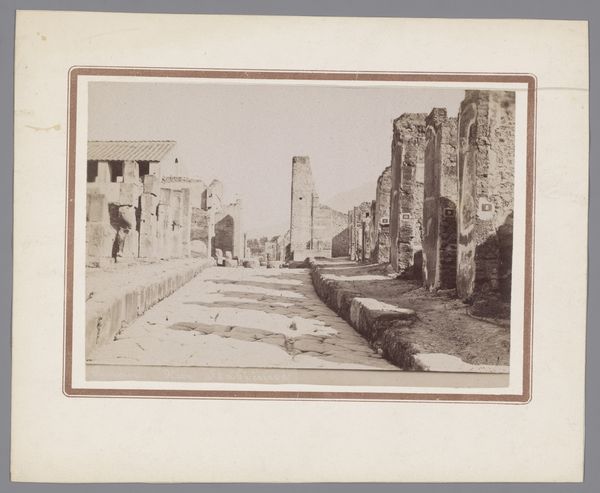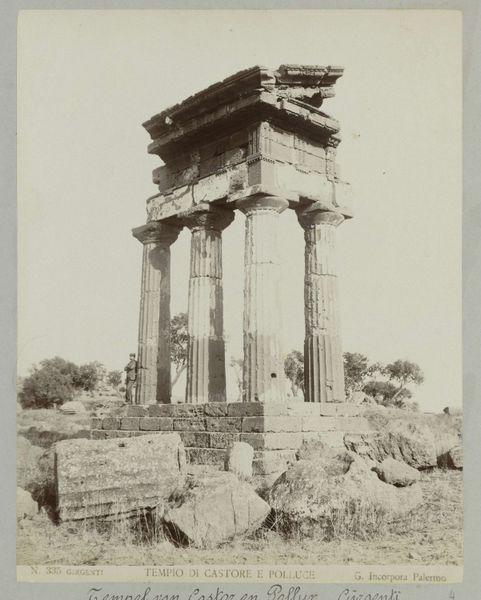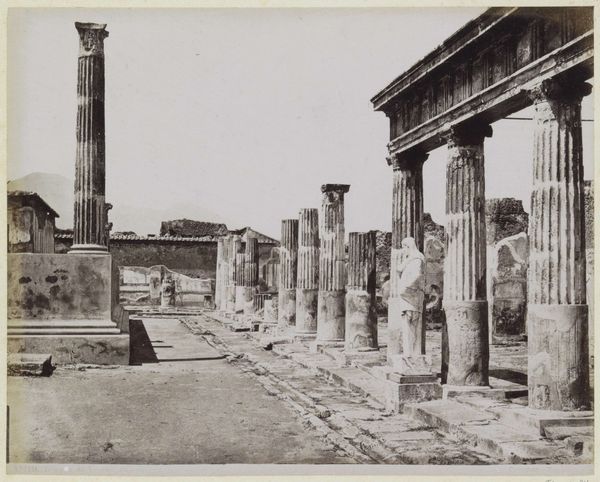
Gezicht op de Zuil van Phocas en de Boog van Septimius Severus op het Forum Romanum te Rome before 1907
0:00
0:00
Dimensions: height 250 mm, width 198 mm
Copyright: Rijks Museum: Open Domain
Curator: Before us, we have a captivating albumen print by Edizione Brogi, taken before 1907. It offers a "Gezicht op de Zuil van Phocas en de Boog van Septimius Severus op het Forum Romanum te Rome" which, for our non-Dutch speakers, is a View of the Column of Phocas and the Arch of Septimius Severus in the Roman Forum in Rome. Editor: The somber monochromatic tones create such a sense of faded glory, of empires past. There’s a stoic grandeur despite the evident decay; it’s quite moving, actually. Curator: Indeed. The photograph freezes a specific moment in the evolving perception and consumption of Roman antiquity in the early 20th century. Brogi's print would have served both educational and sentimental purposes, allowing individuals to own a piece of Rome's historical grandeur. Editor: Looking at this image today, I'm drawn to think about its silent narrative. The Roman Forum, once a center of power, represented in this composition where gender and race certainly influenced who held power and whose stories were told. What perspectives were consciously or unconsciously omitted when these structures, the column and arch, were initially erected and during its reproduction for mass distribution in a print like this? Curator: Precisely. The structures, powerful statements in their time, are softened through Brogi's lens. The print normalizes Rome's visual presence in European identity. Moreover, the very act of capturing and circulating this image reinforces certain colonial power dynamics of the time, as these images helped to formulate understandings and assumptions of place, civilization and time. Editor: And I wonder how this image was used to either promote a certain historical understanding, or whether it was also consumed subversively as a symbol of fallen power, by communities who, back then, found themselves still living under similar forms of authoritarian power, or colonial rule. This can remind us of the ways images travel and accrue varied meaning according to context. Curator: The photograph provides an intriguing lens into the cultural and social understanding of history. It invites us to critically assess the production, circulation, and consumption of historical images in relation to the period. Editor: Exactly. It’s not just about what's pictured, but about the systems that allowed and propelled this picture’s creation and dissemination. Considering power relations in the past can definitely provide insight and direction when considering such relationships in our present and future.
Comments
No comments
Be the first to comment and join the conversation on the ultimate creative platform.
